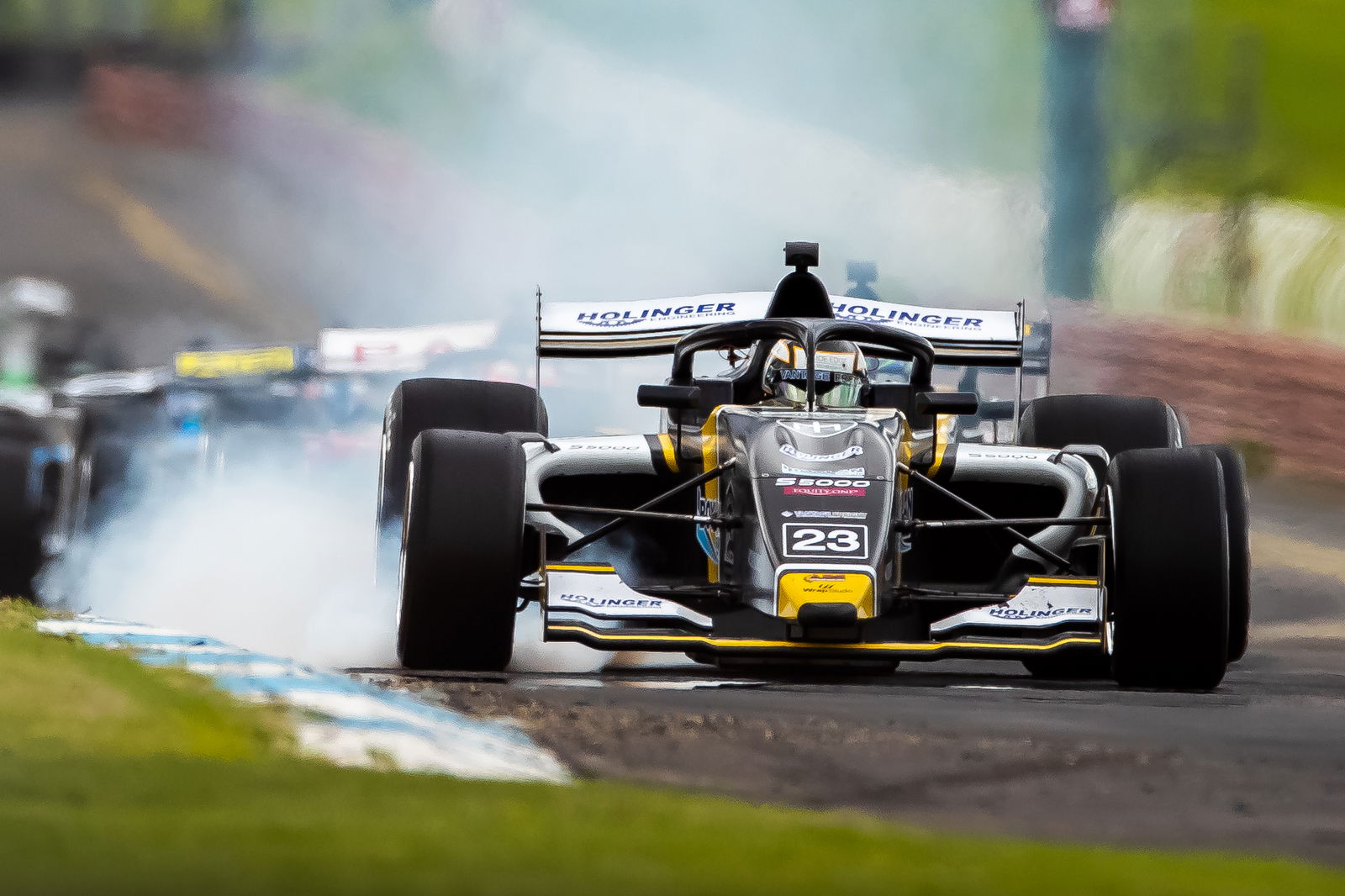

S5000 ultimately lasted just a few years.
Naysayers who doomed the series from its inception will holler “I told you so” – but even those who backed the category from its inception surely could have seen its limited appeal.
So what went wrong?
What we know as S5000 began as Formula Thunder 5000, a concept by former driver and publisher Chris Lambden.
‘Formula Thunder’ was designed as a spiritual successor to Formula 5000, a modern and safer alternative to the 5.0-litre V8 monsters of the 1960s, ‘70s, and ‘80s.
New Zealand-born Lambden was inspired by the thriving Tasman Series and hoped Formula Thunder 5000 would revive a trans-Tasman category that would have cars hopping back and forth across the ditch in summer.
The first Formula Thunder 5000 concept car was based on a Swift chassis used in Japan’s Formula Nippon series (now Super Formula) powered by a 5.0-litre V8 Ford Coyote ‘crate’ engine.
In Formula 5000 style, the prototype featured a periscope-like air intake and basic wings. The car, fundamentally, was overpowered with very little in the way of meaningful aero.
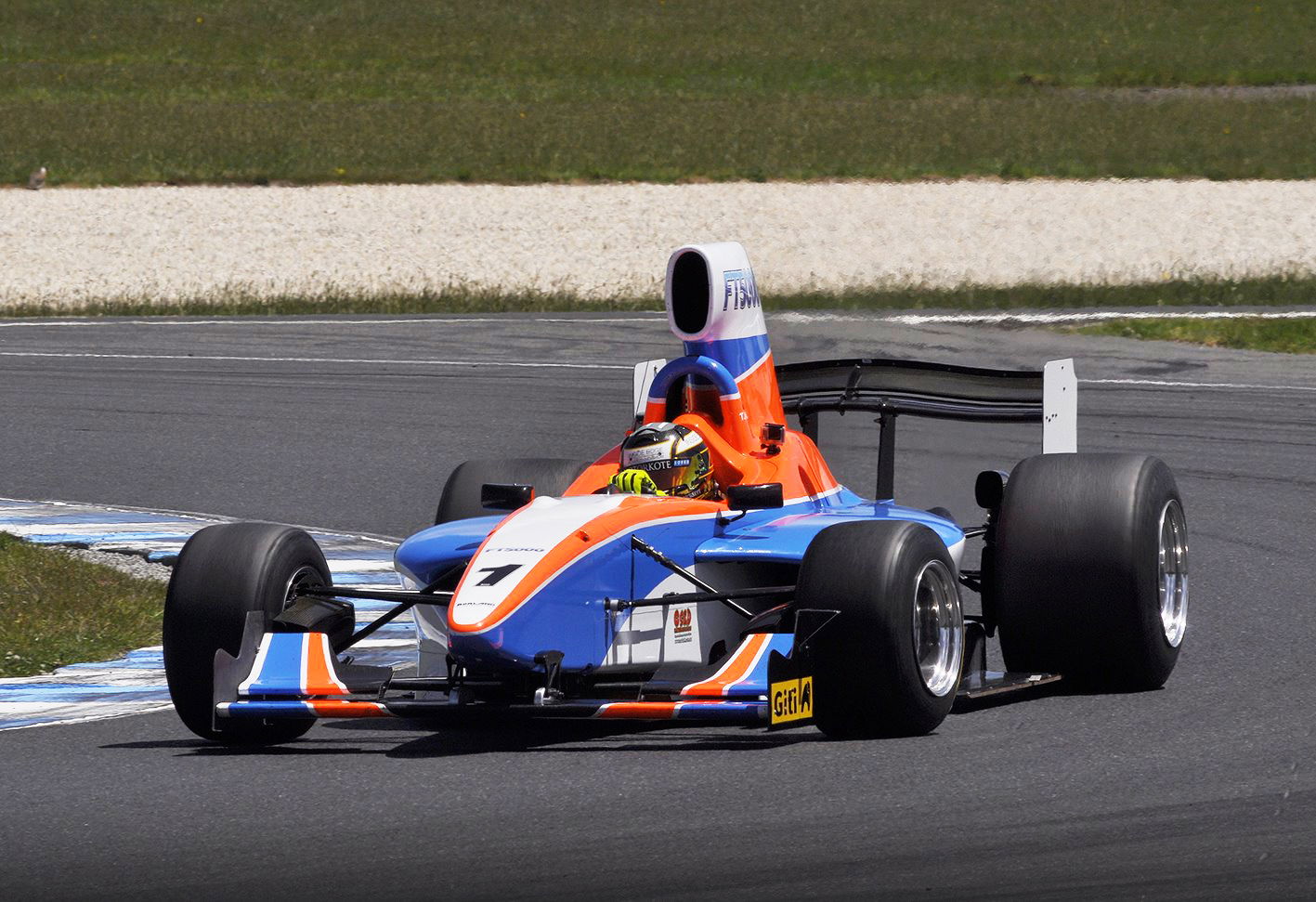
Formula Thunder hit its first stumbling block when a rival concept car was produced – dubbed Super5000.
Supercars initially distanced itself from Super5000, but the car was built, and eventually Supercars put its name to the project.
Both cars were paraded at select Supercars events in Australia and New Zealand. The trans-Tasman idea was well and truly alive.
The Formula Thunder 5000 ran relatively trouble-free, but the Super5000 was hounded by mechanical problems.
The theory that a full fleet of Super5000 cars would be powered by Supercars engines seemed far-fetched to begin with, given the exorbitant cost associated — and where would the engines come from?
Issues about engine supply and whether Supercars teams would run the cars were ultimately meaningless. The pool wasn’t big enough for two, so Formula Thunder 5000 and Super5000 effectively merged. Lambden was still at the forefront of the project.
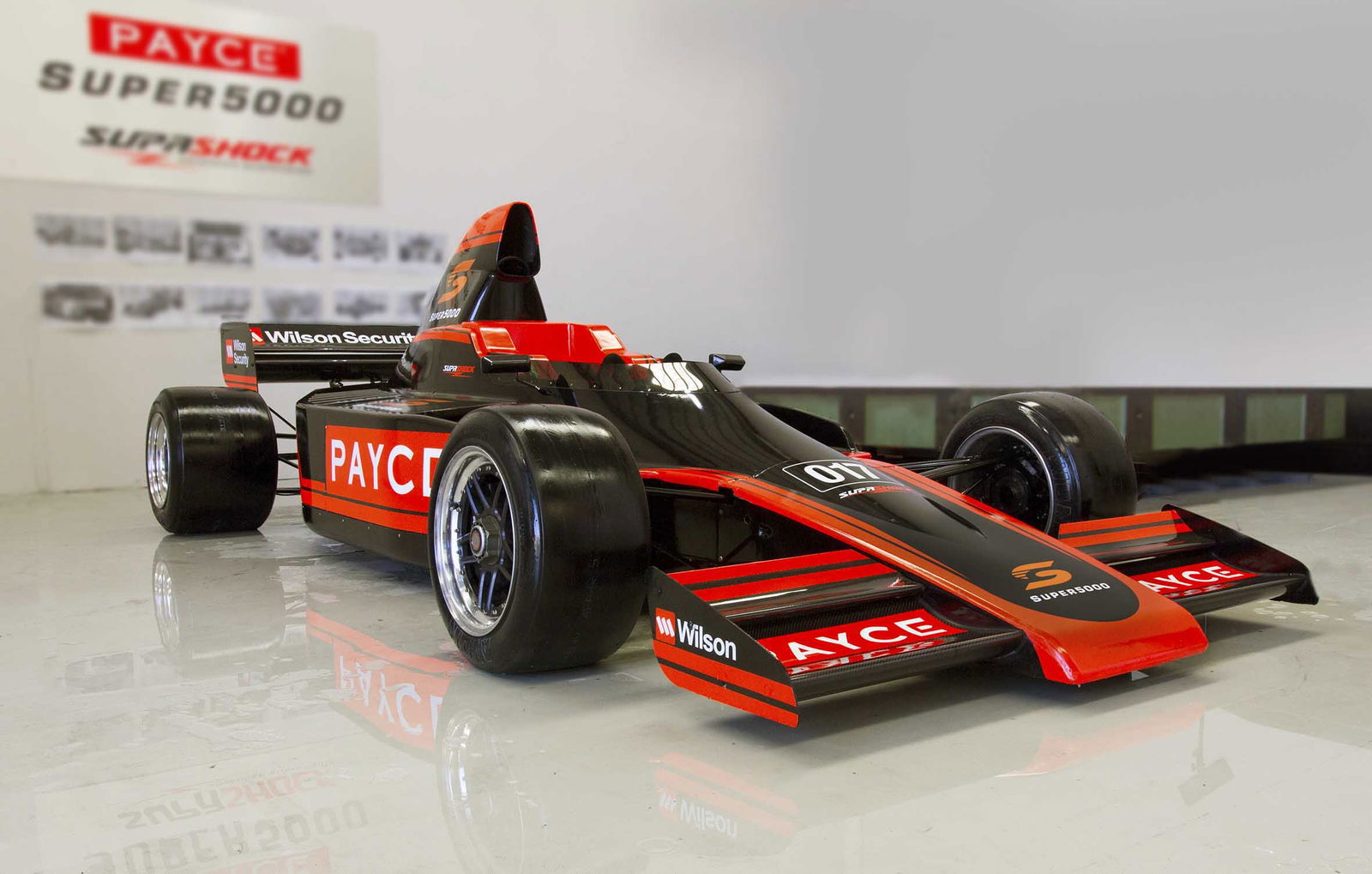
The two concept cars were ditched in favour of a new Ligier carbon tub. To that point, the Ligier JS F3 carbon monocoque had been used exclusively in Formula Regional Americas.
Eventually, what would be known as S5000, was born. The Formula 5000 inspiration had largely gone, bar the wide rear tyres and thumping V8. The Ligier chassis retained its Formula 3 nose and halo but the rear wing was brought across from the Swift-based concept.
Exactly who the series was targeted at was never clear — and that, perhaps, was the biggest problem and maybe even its undoing.
There was early talk that the Formula Thunder 5000 series – had it ever got going – would serve as a step above the Toyota Racing Series (now Formula Regional Oceania).
That made little sense. Any driver with a serious view towards reaching the upper echelon of the F1 feeder series ladder knows which steps to take — either race in the FIA Formula 3 Championship or another Formula Regional series in Asia, North America, or Europe.
Despite its Formula 3-base, the car couldn’t be seen as a proper stepping stone on the single-seater racing ladder – even if it was cheaper and close to home for Australians and New Zealanders. Formula Regional Oceania was already a popular option and Formula Regional Asia wasn’t far away either.
In its final guise as S5000, organisers had a view that the series could be a stepping stone to Supercars. Perhaps that thinking was flawed. Even putting aside the recognition that the series struggled to get with the Superlicence debacle, the cars themselves were too bespoke.
Despite being wings and slicks cars, S5000 lacked downforce relative to the Gen2-spec Supercars and the Giti tyre was incomparable to the Dunlop. Grids peaked at 16 for the Formula 1 Australian Grand Prix meeting in 2022 but often hovered around 10 cars.
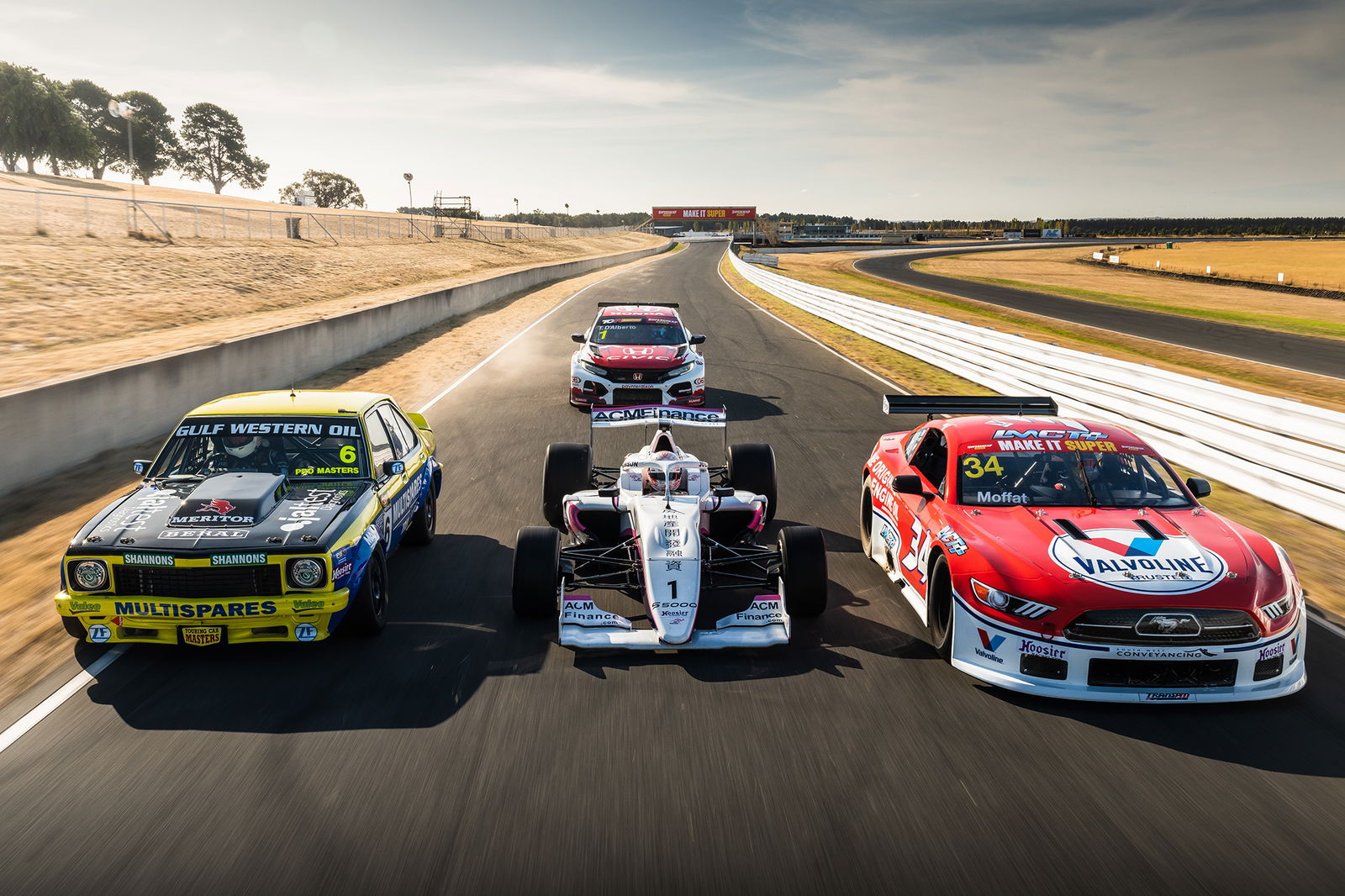
S5000 was ultimately parked. Australian Racing Group promoter Barry Rogers blamed the eligibility rules for the category’s demise, citing a lack of incentive from competitors to invest in the category with no direct pathway into Supercars.
Would the story have been different had Motorsport Australia and Supercars given S5000 more weight with the Superlicence system? It’s still hard to reconcile that would have been the case.
Super2, ultimately, remains the best option for drivers wanting to make the move to Supercars. It is, for all intents and purposes, the logical bridge to Supercars in the same way that F2 feeds F1.
The advent of COVID-19 didn’t help S5000, nor a TV deal with Stan Sport that limited visibility for a category still finding its feet – but those were merely asides to a bigger problem of relevancy.
S5000 was never able to have one of its drivers graduate to Supercars without taking the Super2 path. Joey Mawson tried, but was undone by his own misdemeanour.
S5000 champion Aaron Cameron is the only driver to begin in S5000 and move into Super2 full-time.
Cooper Webster remains the only driver to use S5000 as a starting point towards higher levels of open-wheel racing.
Even on its deathbed, the original architect is optimistic. Lambden still sees a future for S5000.
The cars are for sale and perhaps Lambden will get to pitch his plan to whoever buys the fleet of cars.
As the door closes on S5000, another single-seater series is about to begin – Formula Regional Australia, another Formula 3 series on the FIA’s recognised ladder to F1.
If it fails, then surely Australian motorsport can just accept that open-wheel racing above Formula Ford simply cannot survive.

















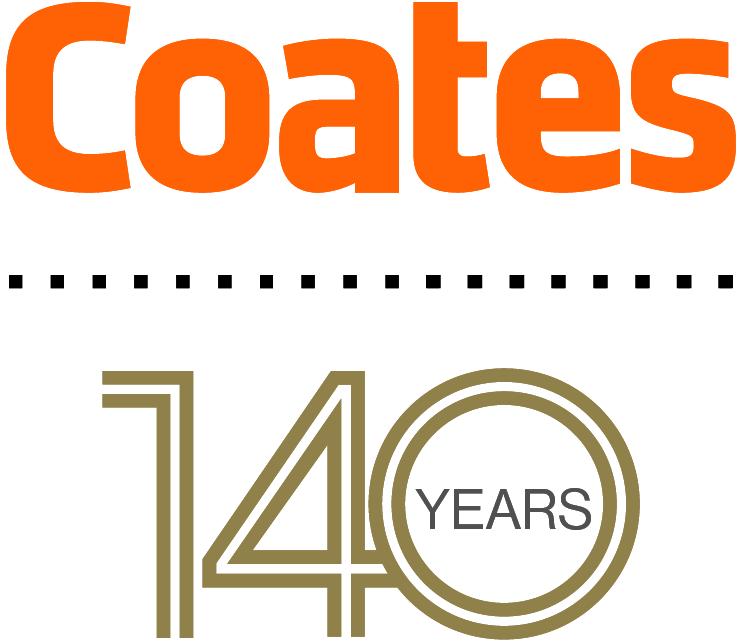



Discussion about this post